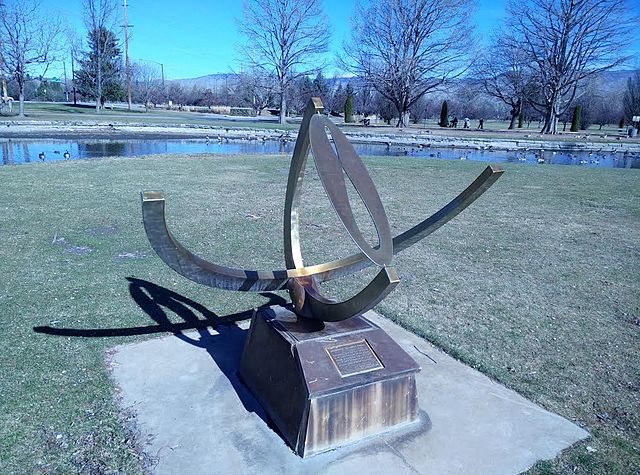A sundial is a horological device that tells the time of day when direct sunlight shines by the apparent position of the Sun in the sky. In the narrowest sense of the word, it consists of a flat plate and a gnomon, which casts a shadow onto the dial. As the Sun appears to move through the sky, the shadow aligns with different hour-lines, which are marked on the dial to indicate the time of day. The style is the time-telling edge of the gnomon, though a single point or nodus may be used. The gnomon casts a broad shadow; the shadow of the style shows the time. The gnomon may be a rod, wire, or elaborately decorated metal casting. The style must be parallel to the axis of the Earth's rotation for the sundial to be accurate throughout the year. The style's angle from horizontal is equal to the sundial's geographical latitude.

SSW facing, vertical declining sundial on the Moot Hall in Aldeburgh, Suffolk, England. The gnomon is a rod that is very narrow, so it functions as the style. The Latin motto loosely translates as "I only count the sunny hours."
A horizontal dial commissioned in 1862, the gnomon is the triangular blade. The style is its inclined edge.
A combined analemmatic-equatorial sundial in Ann Morrison Park in Boise, Idaho, 43°36'45.5"N 116°13'27.6"W
Bowstring sundial in Singapore Botanic Gardens. The design shows that Singapore is located almost at the equator.
Chronometry or horology is the science studying the measurement of time and timekeeping. Chronometry enables the establishment of standard measurements of time, which have applications in a broad range of social and scientific areas. Horology usually refers specifically to the study of mechanical timekeeping devices, while chronometry is broader in scope, also including biological behaviours with respect to time (biochronometry), as well as the dating of geological material (geochronometry).
The hourglass is often used as a symbol representing the passage of time
Clocks; a watch-maker seated at his workbench
Chronos, the Greeks' personification of time
Ancient Egyptian sundial splitting daytime into 12 parts








